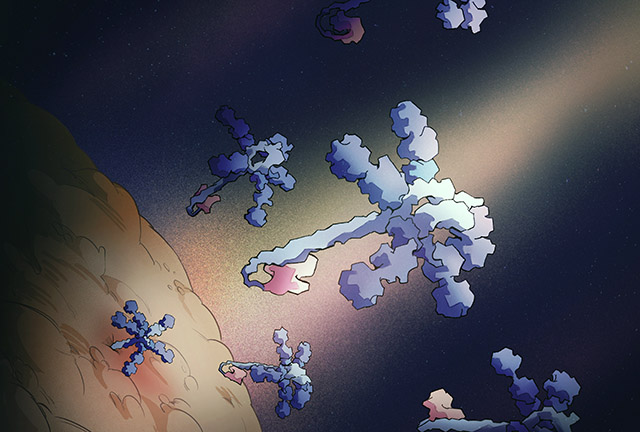Scientists have found that soil bacteria called Streptomyces release harmful protein particles in the shape of umbrellas that are meant to suppress rivals, particularly those that belong to their species.
The data regarding the study was published in the journal Nature.
The most recent example of the many attacks these bacteria have launched against their tiny competitors is the umbrella toxin proteins. Their densely populated, multifarious bacterial populations constitute a flurry of antimicrobial attacks, retaliatory attacks, and defence mechanisms.
Ironically, a lot of antibiotics that are utilised in therapeutic settings either directly come from or are modelled after chemicals that bacteria naturally employ to fight one another. The chemical arsenal that streptomyces use to outgun their rivals is one of the best sources of these compounds. One of these is the widely used, all-purpose medication streptomycin.
These recently discovered antibacterial toxins are distinct from the small-molecule antibiotics produced by Streptomyces because they are huge complexes made up of many proteins. When it comes to the germs they target, they are also substantially more specific than small-molecule antibiotics.
The authors’ report hypothesise that these characteristics of umbrella toxins account for their escape from detection throughout almost a century of study on toxins generated by Streptomyces.
Originally, a bioinformatics search for novel bacterial toxins turned up genes expressing umbrella toxins. These poisons form a big complex with other proteins, according to research conducted by Qinqin Zhao in the microbiology lab of Joseph Mougous at the University of Washington School of Medicine. The tests were genetic and biochemical.
Young Park conducted cryo-electron microscopy on these protein complexes in the lab of David Veesler, a Howard Hughes Medical Institute Investigator and professor of biochemistry at the UW School of Medicine.
According to these investigations, Qinqin’s isolated toxin complexes take on a remarkable look consistent with their finding in Seattle. They resemble umbrellas.
The shape of these particles is quite peculiar, and it will be interesting in future work to learn how their unusual morphology helps them eliminate target bacteria.
Mougous, professor of microbiology at the UW School of Medicine
Also Read| Reduced risks of common diseases through the inherited predisposition for higher muscle strength
The next step was for the scientists to screen the effects of these toxins on every organism they could think of, ranging from fungus to 140 different bacteria, some of which were extracted from sorghum plants in the lab of study author Devin Coleman at the University of California, Berkeley, and the Agricultural Research Service of the U.S. Department of Agriculture.
The poisons especially targeted other Streptomyces species, who are their potential adversaries.
We think this exquisite specificity may be due to the proteins that make up the spokes of the umbrella, which vary across the particles. These include proteins that might latch onto specific sugars found on the surface of competitor bacteria.
S. Brook Peterson, a senior scientist in the Mougous lab
Study authors Dapeng Zhang of St. Louis University and his graduate student Youngjun Tan discovered that many more types of bacteria also had the genes to produce umbrella particle poisons by examining the hundreds of publically available bacterial genomes. Fascinatingly, every one of these species forms branching filaments, which is an uncommon way for bacteria to develop.
Also Read| Neurodegenerative disease can be triggered by a viral infection; mitochondria have a key role
Apart from the numerous unanswered concerns about the fundamental biology of umbrella toxin particles, Mougous and associates are fascinated by their possible therapeutic uses.
They believe that umbrella toxins may be able to affect the germs that cause diphtheria and TB. It is noted that the microorganisms in question have developed resistance to conventional antibiotics. The scientists hypothesised that because umbrella toxin particles can suppress these dangerous disease-causing bacteria, they would be worth investigating.
Source: UW Medicine Newsroom
Journal Reference: Zhao, Qinqin, et al. “Streptomyces Umbrella Toxin Particles Block Hyphal Growth of Competing Species.” Nature, 2024, pp. 1-9, https://doi.org/10.1038/s41586-024-07298-z.
Last Modified:




